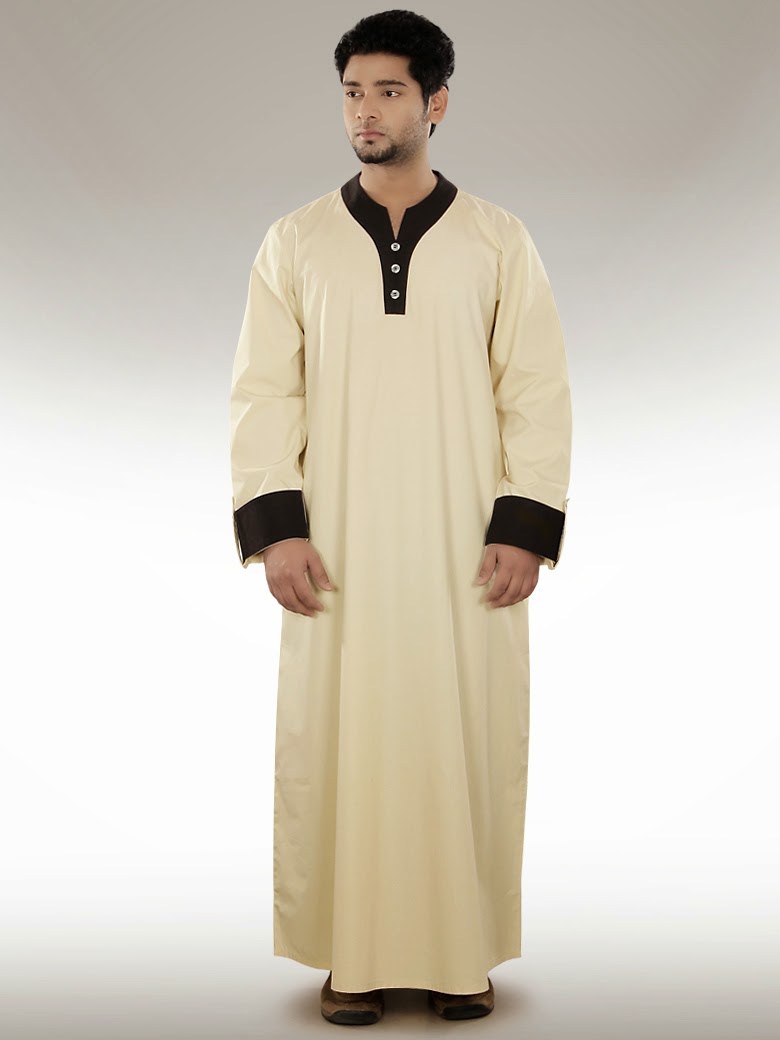Thawb
A thawb or thobe is an ankle-length garment, usually with long sleeves, similar to a robe. It is commonly worn in Iraq and Arab countries bordering the Persian Gulf. An izaar is typically donned underneath.
The word thawb is the standard Arabic word for 'a garment'. It is the traditional Arabian clothing for men. It is sometimes spelled thobe or thaub. It is a tunic, generally long. The word is used specifically for this garment in the Persian Gulf region. There has been some debate regarding the correct length of the thawb.
Prevalence
The thawb is commonly worn by men in the Arabian Peninsula, Iraq, and other Arab countries in the Persian Gulf. It is normally made of cotton, but heavier materials such as sheep's wool can also be used, especially in colder climates in Iraq and Syria. The style of the thawb varies slightly among the various regions within the Persian Gulf. The sleeves and the collar can be stiffened to give a more formal appearance. Other names may be used for this garment. In Souraqia and Oman, dishdasha is the most common word for the garment; in the UAE, the word kandura is used. In Morocco, the sleeves tend to be much shorter so that the thawb may seem more like a long T-shirt and is locally called gandora. Also the neck tends to be more open than in its Saudi counterpart and is often embroidered as is the breast pocket. Also it might lack buttons altogether.
 The term thawb is also used to refer to similar women's garments. The traditional Palestinian woman's long tunic is called thawb. Another example is a very long, over-sized woman's garment with a heavily embroidered front panel and billowing back, also known as a Khaleeji dress, which is most commonly seen in the West worn for performance of the Saudi women's social-style dances, in which manipulation of the large thawb is a key component.
The term thawb is also used to refer to similar women's garments. The traditional Palestinian woman's long tunic is called thawb. Another example is a very long, over-sized woman's garment with a heavily embroidered front panel and billowing back, also known as a Khaleeji dress, which is most commonly seen in the West worn for performance of the Saudi women's social-style dances, in which manipulation of the large thawb is a key component.
This garment is also known as Kanzu in Swahili, and is commonly worn on the Swahili Coast by Swahili men.
Other occasions
A thawb or thaub can sometimes be worn with what is known as "besht" or in other parts of the Arabian Peninsula abat "عباة" which means a robe. It is usually worn in ceremonial occasions or by officials; a "besht", "بشت" can be worn in a wedding, Eid, and funerals. It may refer to a status of wealth and royalty, or sometimes a religious position. It was originally manufactured in Syria, Iraq and Jordan, and it is usually worn in Jordan, Syria, Iraq and the Arabian peninsula.



EmoticonEmoticon